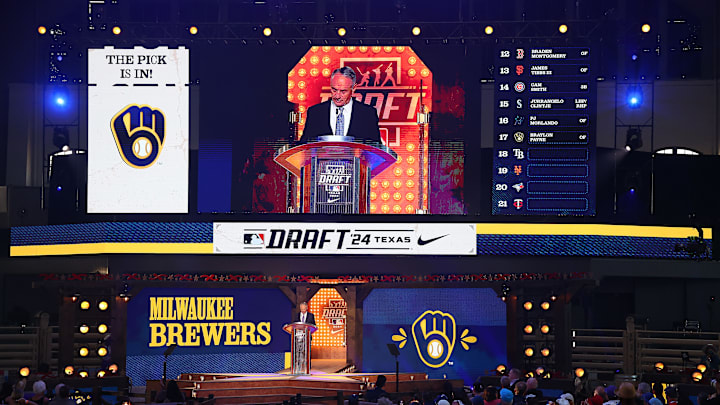Round CB-A - Blake Burke, 1B
Grade: B
Blake Burke played a big role on a National Championship team with the Tennessee Volunteers. He was a slugger in the heart of that powerful lineup and productive college bats always catch the Brewers attention.
However, Burke is a first base-only profile. There is no chance he can play third base, there is no corner outfield spot for him, he is a first baseman on a DH, making pretty much everything dependent on the bat here.
The good news is, it's a pretty good bat and a left-handed slugger with a pretty strong hit tool should thrive in American Family Field. It seemed a little early for Burke, and it should save some money. He could move quickly through the system, but with Tyler Black, Brock Wilken, Mike Boeve, and now Burke, the Brewers all of a sudden have a logjam of corner infielders.
Round 2 - Bryce Meccage, RHP
Round CB-B - Chris Levonas, RHP
Grade: A
I'm going to loop these two picks together because they're very similar, they went back to back, and they're the two best picks of the Brewers draft class in my opinion.
The Brewers took big swings on upside here late on Day 1 and they're the targets the Brewers were saving money for with their first two selections similar to what Eric Bitonti and Cooper Pratt were last year.
Meccage and Levonas have "top of the rotation upside" according to Brewers scouting director Tod Johnson. Their fastballs are already up in the mid-90s and both have a pair of high spin rate sliders and curveballs. The Brewers love high spin rates in their pitchers and both these guys have full starter's arsenals to work with in the pitching lab.
High school right-handed pitchers are the riskiest demographic there is in the MLB Draft. That inherent risk and how far away these two arms are from contributing to the big league level is what keeps this grade from being an A+. There's a lot to like here and these two pitchers will likely be the highest rated prospects from this class when the Brewers top prospects list gets updated.
